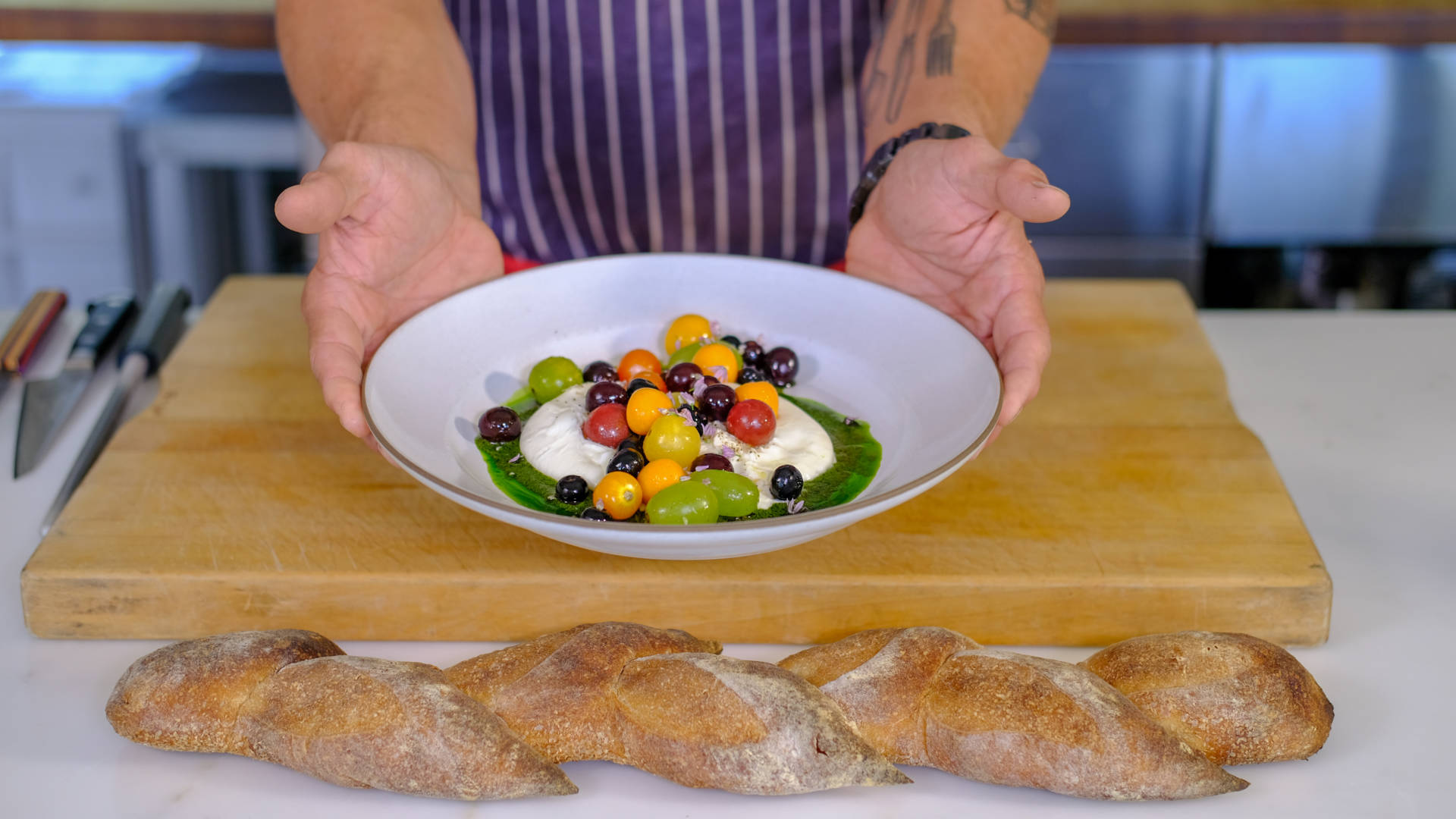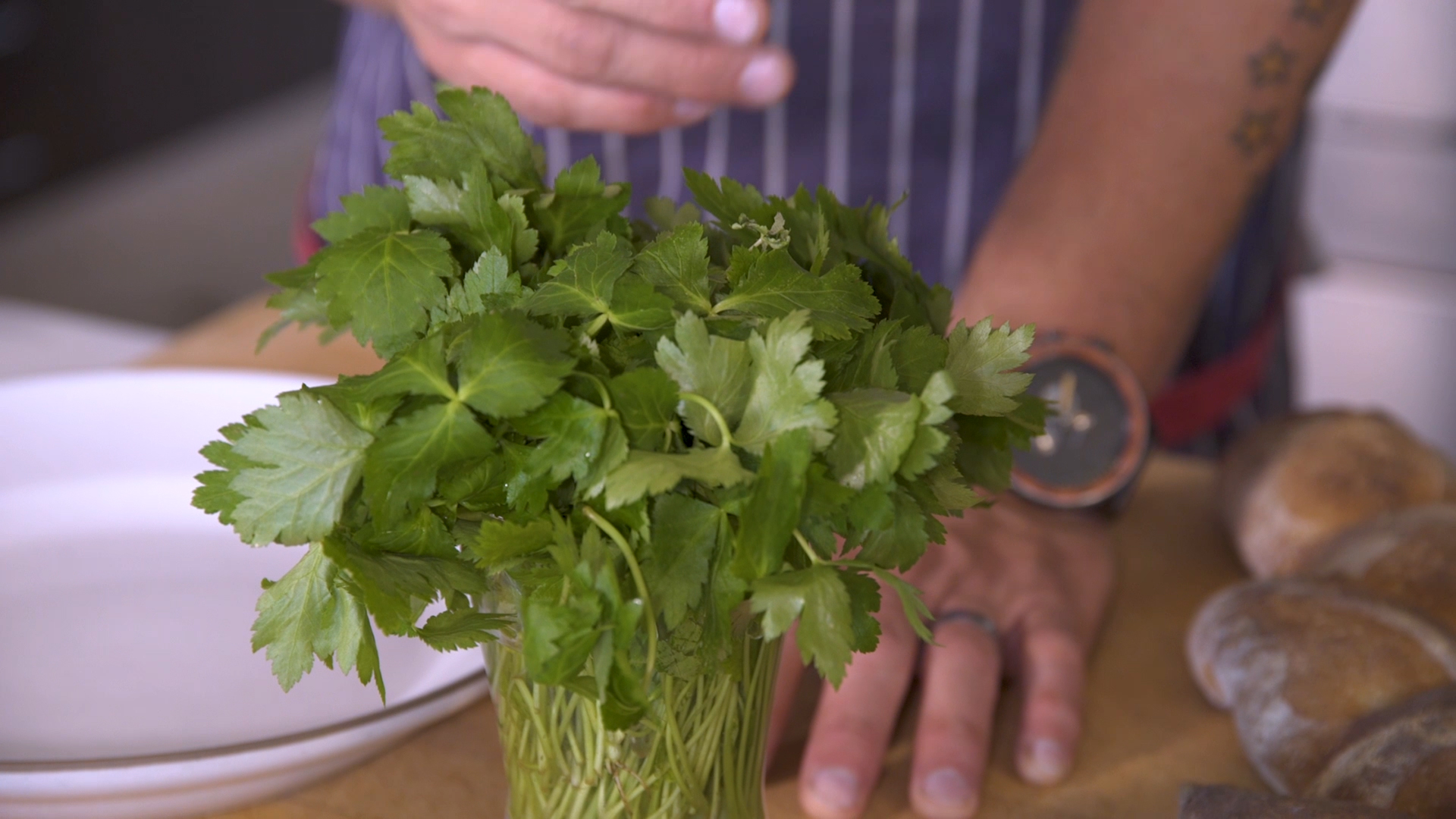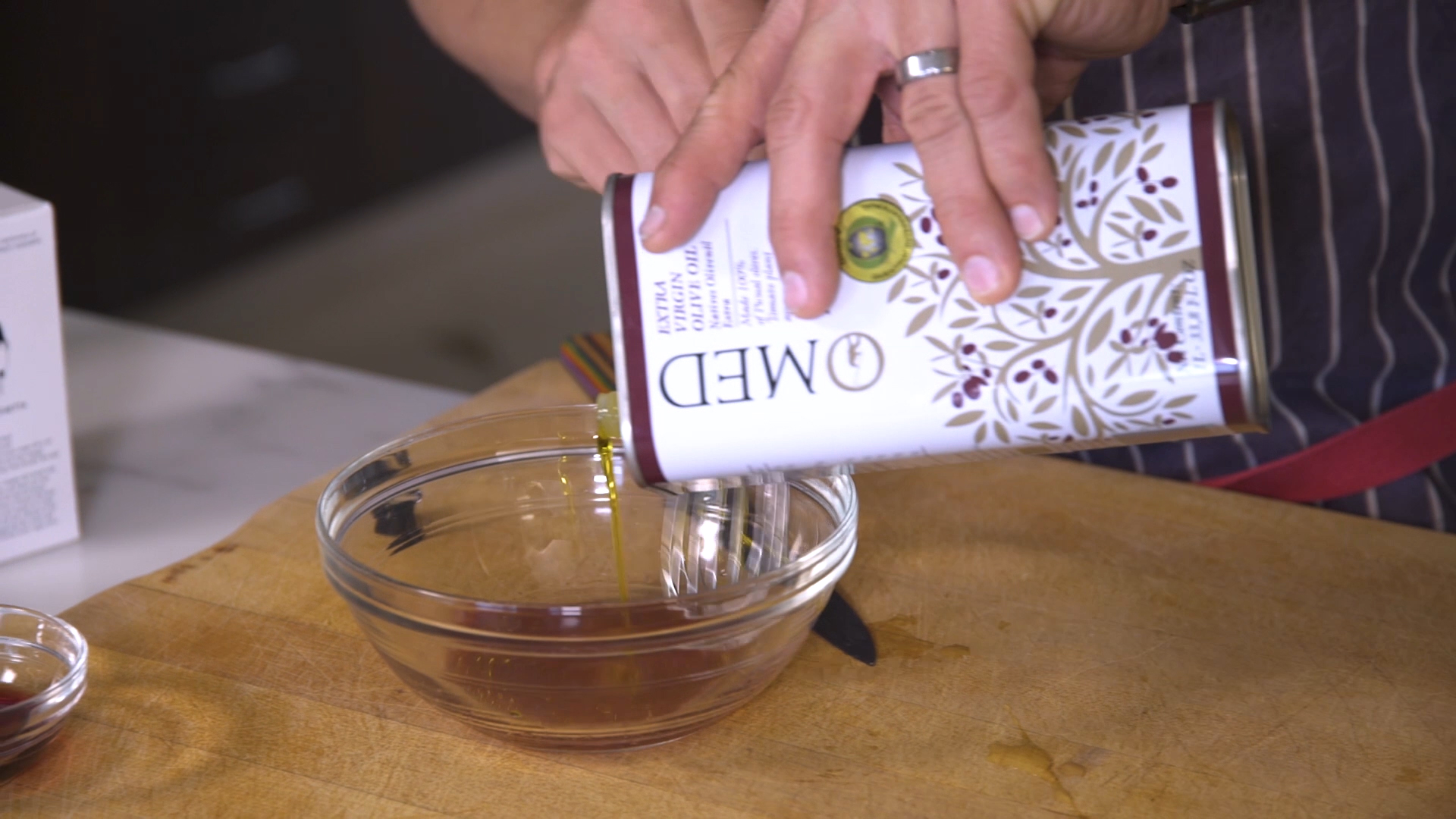Photos: Vic Chin, Video: Vic Chin and Peter Ruocco
Burrata is one of those wonderful ingredients that people love to order in restaurants but don’t always know what to do with it at home. My salad makes for a luxurious lunch or appetizer to share. It’s a flavorful, colorful, pretty and easy to assemble salad (using the best fruit in season) that contrasts beautifully with my simple but delicious mitsuba pesto.
Burrata is a pillow of fresh mozzarella filled with curds, or stracciatella, and cream making it soft, rich and buttery. The name burrata actually translates as “buttery” in Italian, and its origins are from the Apulia region of Italy. In Italy, it is often found wrapped in asphodel leaves, and fresh green leaves indicate the freshness of the cheese. Here in the US, we tend to find it wrapped in plastic. Eat your burrata within 48 hours of purchase for the best, freshest flavor.
I love the flavor of mitsuba which is sometimes known as Japanese parsley. It is said to have a subtle flavor mix of Italian parsley and celery leaves, although it really isn’t related to either. Every part of the plant — leaves, stems, seeds, and roots — is edible and it’s enjoyed in a variety of dishes in Japan. Add it fresh and don’t cook it too long or it will become bitter.
“Taste the Rainbow” Burrata Salad
Serves 2 or more

Ingredients:
- ½ cup Thomcord grapes
- ½ cup mixed color cherry tomatoes
- ½ cup cape gooseberries
- ½ cup blueberries
- 1 teaspoon freshly squeezed lemon juice
- 1 teaspoon red wine vinegar
- ¼ teaspoon freshly ground black pepper
- ¼ teaspoon Jacobsen sea salt or other flake salt
- 3 tablespoons extra virgin olive oil*
- 2 burrata balls
- Mitsuba pesto, for garnish (see recipe below)
- Extra flake salt
- Freshly ground black pepper
- Chive flowers, for garnish
Instructions:
- In a large bowl combine the grapes, tomatoes, gooseberries, and blueberries.
- In a small bowl, whisk the lemon juice, vinegar, salt, and pepper together. Drizzle in the oil, whisking lightly to combine.
- Spoon 2 or 3 tablespoons of the vinaigrette over the fruit and stir to coat lightly.
- To serve: Spoon about ¼ cup of the pesto onto two large plates, and gently place the burrata on top. Using a sharp knife, carefully cut the surface of the cheese to expose the creamy interior. Season each cheese with salt and pepper. Spoon half of the dressed fruit mixture on top and scatter chive blossoms over the fruit. Serve immediately.
Mitsuba Pesto
Makes about 1 ½ cups

- 8 ounces mitsuba leaves
- ¾ cup extra virgin olive oil, divided
- 1 teaspoon kosher salt
- ½ teaspoon freshly ground black pepper
Instructions:
- In a large pot of boiling salted water, blanch the mitsuba leaves until the water just comes back to a boil, but no longer than about 30 seconds.
- Transfer the leaves to a bowl of salted ice water. Remove from the ice water and squeeze out all excess moisture.
- In a blender, combine the blanched mitsuba, half of the oil, salt and pepper. Blend until reduced to a paste, then slowly drizzle in the remaining oil until the pesto is smooth and emulsified.
- Store in a sealed glass container and refrigerate. Good for up to 3 days.
*Olive Oil vs Monocultivar Olive Oil

Just as a winemaker blends wine from different grapes to make fine wine, some olive oils are blended from several olive varieties to make a blended oil. Other olive oil producers press oils from a single estate or a single olive variety making a monocultivar olive oil. Some of these artisanal, single-estate oils are made in small quantities and are among the world’s best.